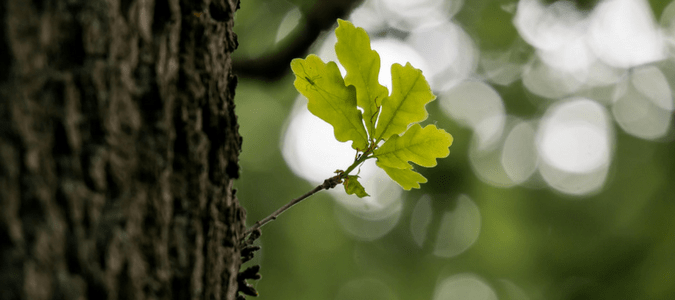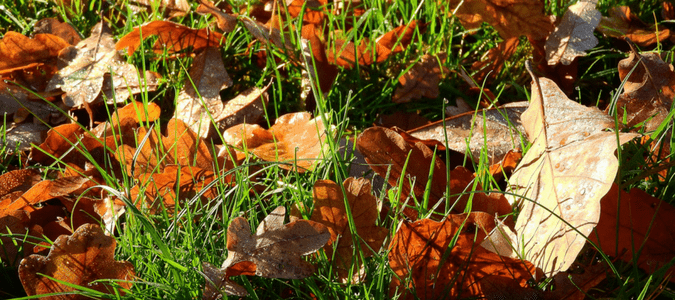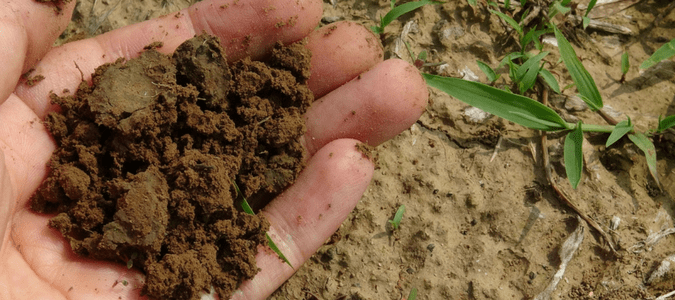Oaks may give us welcome shade in the summer, but they also give us something else throughout the year: lots of leaves. Most people aren’t huge fans of having dead leaves cover the lawn that they’ve spent so much time on. Or maybe you’ve heard that oak leaves are acidic and worry they will damage your grass or soil. If you’re new to the topic, start by learning what compost is and how it benefits your yard.
In the past, you may have raked up the leaves and put them in bags. Fortunately, there’s more than one way to deal with them better. Most options focus on reusing the leaves rather than simply removing them.
Are Oak Leaves Acidic?
There’s a short and long answer to this question. The short answer is that, yes, oak leaves are acidic.
However, it’s important to explain this a bit more. When oak leaves are fresh, they have a pH level of around 4.5 to 4.7, making them acidic. As they break down, they get much closer to a neutral level. What’s most important is that multiple studies have shown that oak leaves have no effect on the acidity of soil.
In fact, oak leaves have nutritional value that is transferred to your soil as the leaves decay. These leaves can contain nitrogen that is very useful for your lawn.
So, should you let your fallen live oak leaves remain untouched on your lawn until they break down on their own? You can. Unlike other types of leaves, live oak leaves are unlikely to encourage lawn disease or pests. Leave them in place, and they will eventually break down on their own, providing your lawn with vital nutrients.
Live oak leaves take a long time to break down, which can be frustrating for homeowners trying to clean up their yards. If you’re looking for a better way to manage them, mulching and composting are two great options.
Whether you want to mulch or use compost on your lawn, it helps to hire a trusted lawn care professional. They have the experience to apply compost to your yard and take care of all your lawn care needs.
Mulching Oak Leaves on Your Lawn: What You Should Know
Put simply, mulching leaves involves shredding them into smaller pieces so they can be spread across your lawn or used in flower and vegetable beds.
Once you’ve gotten past the cutting or breaking up part of the process, mulching is incredibly easy. Since mulch is intended to go over the top layer of soil, it’s as simple as spreading out the leaves and letting them sit.
The best way to mulch oak leaves is with your mower. A mulching mower is ideal, but if you don’t have one, a standard mower will work just fine. After you’ve shredded the leaves, add them directly to your gardening bed or wherever else you want to use them.
Mulching is a great start, but composting offers even greater rewards if you want to turn those leaves into nutrient-rich material for your garden.
How To Compost Live Oak Leaves
Live oaks are one of several oak tree species that do well in Texas and other southern states. If you want to compost these leaves, here are the steps to consider:
- Know what to expect
- Pick the right spot
- Rake up the leaves
- Shred your leaves
- Build your compost pile
- Mix and aerate
- Let time and nature do their work
Let’s dive into each of these steps to make compost.
Know What To Expect
Make sure you’re okay with having a compost pile. This may seem obvious, but composting means having a compost pile. Your compost pile is going to be a mound of decaying matter around three by five feet wide that will sit in your yard.
Another consideration is that compost piles can attract pests like rodents or roaches, especially if they include food scraps or aren’t maintained properly.
Pick the Right Spot for Your Compost Pile
The next step is finding a place to put your compost. The best location is one that drains well, gets a few hours of sunlight each day, ideally four to five, but still has some shade to keep the pile from drying out too quickly.
We typically recommend putting your compost in a back corner. Keeping your compost pile away from your home puts more distance between you and any pests it might attract.
Rake up the Leaves
With mulching, the goal is just to cut up the leaves and spread them out. Composting, on the other hand, means collecting them all in one spot.
Shred Your Leaves for Faster Decomposition
Once the leaves are all piled up, it’s time to shred them with a leaf shredder or lawn mower. We recommend using a lawn mower with an attached bag, so you don’t have to gather the shredded leaves and put them in a garbage bag.
While you can put whole leaves in your compost, shredding them will help them decompose faster, so your lawn can benefit sooner. Shredded leaves will also take up less room in your compost.
Build Your Compost Pile
When you start forming your compost pile, you’ll want to start with a four-inch layer of leaves on the bottom. Next, add about an inch of organic material. Good options include existing compost, grass clippings or green weeds.
Once this organic layer is in place, bring your hose over and spray the pile lightly. If you have more leaves to compost, repeat the process.
Mix and Aerate
To encourage decomposition, use a rake or pitchfork to mix the compost pile regularly to incorporate oxygen. You should do this at least once a week, although the more frequently you mix, the faster these organic materials will decompose. Continue to spray your compost pile lightly with water.
Let Time and Nature Do Their Work
Continue turning and maintaining the pile until it becomes dark brown, crumbly and smells earthy. At that point, you have mature compost that is ready to use. It can be helpful to learn more about what compost is used for and how it can improve soil quality.
While compost is beneficial, it’s still important not to use too much compost, especially in raised beds, since it can throw off nutrient balance. A lawn care professional can help you find the right balance for your lawn.
Benefits of Composting Oak Leaves
There are many good reasons to compost oak leaves, just like any other organic matter, whether you’re concerned about the environment, your landscape or your budget.
These include:
- Reducing waste
- Healthier soil, less fertilizer
- Introduce healthy microbes to your soil
- Help your plants fight off pests and disease
- Increased production
Let’s take a closer look at each one.
Reducing Waste
Composting can reduce your waste by up to 50 percent. Composting is a great way to keep extra waste out of landfills, especially when it comes to kitchen scraps.
Healthier Soil, Less Fertilizer
Tired of using and paying for fertilizers? Composting can give you a sustainable alternative.
Introduce Healthy Microbes to Your Soil
When you add compost to your soil, it supports microorganisms that improve soil health, creating fertile soil for your plants to thrive.
Help Your Plants Fight Off Pests and Disease
Those microorganisms also play a role in keeping pests out and reducing disease in your garden.
Healthy Root Development
When there’s a higher amount of organic matter in your soil, it retains moisture better, releasing it more slowly over a longer period. Roots grow deeper and stronger in this kind of soil. You can also use compost for lawn care to improve moisture retention and grass health throughout the year.
Increased Production
A simple fact is that the better your soil, the better your plants will grow, especially if you compost vegetable gardens regularly.
ABC Can Take Care of Your Lawn
There are many benefits to adding compost to your garden. Instead of spending your time trying to figure out your lawn care schedule, let ABC Home & Commercial Services handle this labor-intensive work. Our lawn care experts are familiar with how our local conditions can affect your soil and will be able to implement a yard care schedule that keeps your lawn and plants healthy





